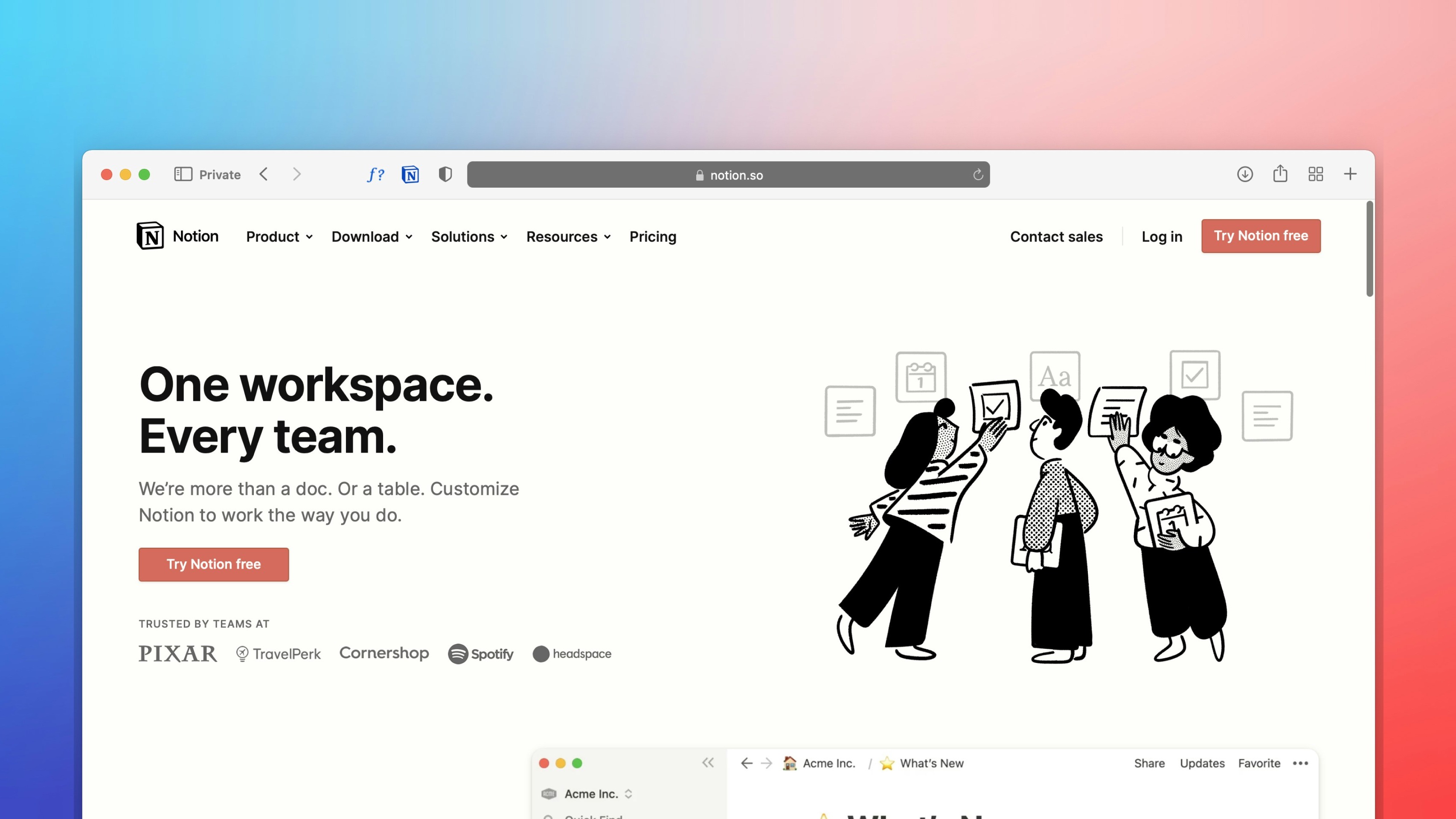 Freelancer tips
Freelancer tips Notion: What It Is, What It’s For, and How to Use It in Your Daily Life
Want to better organize your life and work? Notion can help boost your productivity. Click here to discover what this software is and what it’s used for.



Have you ever found yourself scrambling to meet a deadline, wondering where the time went?
You're not alone.
Time management is one of the hardest things for many freelancers around the world.
The freedom that comes with freelancing is a double-edged sword; while you set your own hours, it’s easy to lose track of time without a structured plan.
Effective time management and tracking are essential skills for freelancers, not just for meeting deadlines, but for maintaining a healthy work-life balance.
Without clear oversight of how your time is spent, you might find that your days blur together, productivity wanes, and stress levels rise.
In this article, we'll dive into the best practical time tracking techniques specifically tailored for freelancers.
You’ll discover actionable strategies to optimize your workday, tools to streamline your process, and tips to help you stay on top of your game.
By the end, you’ll have a toolkit to transform how you manage your time, allowing you to work smarter, not harder, and make the most of your freelance career.
As a freelancer, you enjoy the flexibility of setting your own hours and choosing your projects, but this freedom also comes with its own set of challenges.
Here’s why mastering time management techniques is crucial for freelancers:
Lack of structure: Unlike a traditional 9-to-5 job where your day is clearly defined, freelancing often means working from home or on the go without a fixed schedule, but this lack of structure can make it difficult to stay focused and organized. Time management techniques help you create a structured approach to your workday, setting boundaries and ensuring you stay on track.
Distractions: Freelancers frequently face distractions, whether it's household chores, social media, or unexpected interruptions. By employing time management strategies, like setting specific work periods and using productivity tools, you can minimize these distractions and stay focused on your work.
Work-life balance: One of the biggest struggles for freelancers is maintaining a healthy work-life balance — the line between personal time and work time can easily blur, especially when working from home. Effective time management helps you delineate work hours from personal hours, ensuring you allocate time for relaxation, family, and hobbies.
Less productivity: Good time management translates into increased productivity. When you effectively plan and track your time, you can prioritize tasks, set realistic deadlines, and work more efficiently.
High stress levels: Knowing exactly how much time you spend on various tasks helps you avoid overcommitment and manage your workload more effectively. By avoiding last-minute rushes and managing your time well, you can reduce the anxiety and burnout that often accompany tight deadlines and disorganization.
Keeping track of time is a fundamental skill for freelancers, helping you stay organized, meet deadlines, and maintain a healthy work-life balance.
Here’s a guide on how other freelancers effectively track their time that you can try:
One of the most efficient ways to track your time is through dedicated time tracking tools.
These apps and software are designed to monitor how much time you spend on different tasks and projects.
These tools often come with features like automated reminders and integrations with other apps, helping you stay on top of your tasks effortlessly.
Here are a few popular options:
Spatio offers real-time tracking and analytics to help freelancers monitor their productivity and manage their time effectively.
Great for its simplicity and ease of use. You can start and stop timers for different tasks and generate detailed reports.
Offers time tracking along with invoicing features, making it ideal for freelancers managing multiple clients.
A free tool that provides time tracking, reporting, and even team management features.
Timely automatically tracks your work and organizes it into a timeline, providing insights into how you spend your time without manual input.
RescueTime runs in the background and tracks your activity on your computer or mobile device, offering detailed reports on how you spend your time.
If you work with clients on Upwork, their time tracking tool is integrated into the platform, helping you track billable hours easily.
Hubstaff provides time tracking along with productivity monitoring and reporting features, designed to help freelancers and remote teams.
Jibble offers simple time tracking with features tailored for freelancers, including mobile and desktop apps to track time on-the-go.
The Pomodoro Technique is a time management method where you work in focused intervals, typically 25 minutes, followed by a short break.
This technique helps maintain high productivity levels and avoid burnout.
Use a timer or a Pomodoro-specific app to keep track of these intervals.
It’s a simple yet effective way to manage time, especially for tasks that require intense concentration.
A well-structured daily schedule can be a game-changer.
Plan out your workday by allocating specific blocks of time to different tasks or projects. Here’s how to do it:
Start with priorities: List out your most important tasks and estimate how much time each will take.
Block time: Set aside dedicated blocks of time for each task. For example, you might schedule “Client Work” from 9 AM to 11 AM and “Content Creation” from 11:30 AM to 1 PM.
Stick to it: Follow your schedule as closely as possible and adjust as needed.
By having a clear plan, you’ll find it easier to manage your time and stay focused on what needs to be done.
For freelancers who prefer a low-tech approach, a simple timer can be incredibly effective.
Set a timer for specific tasks and work until the timer goes off.
This method is particularly useful for breaking tasks into manageable chunks and maintaining focus.
You can use a physical timer, a smartphone app, or even an online timer.
If you’re more comfortable with a hands-on approach, you can track time manually using a spreadsheet or a time log. Here’s how:
Create a log: Set up a document where you record the start and end times for each task.
Note interruptions: Record any interruptions or distractions to identify patterns and areas for improvement.
Review regularly: Periodically review your time log to assess how you’re spending your time and make adjustments as needed.
Implementing time tracking into your daily routine can significantly improve your productivity and help you manage your work more effectively.
Choose the right tool: Begin by selecting a time tracking tool that fits your needs. Whether it’s a dedicated app like Toggl or Harvest, or a simpler method like a spreadsheet or manual log, pick something that suits your workflow.
Define your tasks: Before you start tracking, list out the tasks and projects you work on regularly. This will help you categorize your time entries accurately. For instance, you might have categories like “Client Meetings,” “Project Development,” and “Admin Tasks.”
Set up your system: Configure your time tracking tool to reflect these tasks. Create projects and tags within the tool to help organize your entries.
Start tracking: Begin by tracking all your work activities. Start the timer when you begin a task and stop it when you finish. If you’re using a manual method, record the start and end times for each task in your log.
Be detailed: When tracking time, be as specific as possible about what you’re working on. Instead of a vague entry like “Work,” use detailed descriptions like “Drafting blog post for Client X” or “Design revisions for Project Y.”
Track continuously: Try to track your time in real-time rather than making entries retroactively. This helps in capturing accurate data and avoids forgetting details about what you were working on.
Review regularly: Set aside time each week to review your time tracking data. This will help you see patterns, assess how well you’re sticking to your schedule, and identify areas where you can improve.
Use reminders: Set reminders to start and stop tracking at appropriate times. Some apps, like Timely or Hubstaff, offer automatic tracking and reminders, reducing the need for manual input.
Integrate with your workflow: Ensure your time tracking method integrates smoothly with your daily tasks. For example, if you use a project management tool, check if it can sync with your time tracker to streamline your workflow.
Inconsistent tracking: One common mistake is failing to track time consistently. This can lead to gaps in data and inaccurate insights. To avoid this, make time tracking a routine part of your workflow and stick to it daily.
Overloading categories: Overcomplicating your task categories can make tracking cumbersome and less effective. Keep your categories simple and relevant to your workflow. For example, use broad categories like “Client Work” and “Administrative Tasks” rather than too many specific sub-categories.
Ignoring breaks: Don’t forget to track breaks and non-working periods. Ignoring these can skew your data and lead to unrealistic assessments of your productivity. Record breaks and downtime as separate entries to maintain accurate tracking.
Neglecting data review: Failing to review your time tracking data regularly can result in missed opportunities for improvement. Set a weekly or bi-weekly schedule to review your data, assess your productivity, and make necessary adjustments.
Overestimating efficiency: It’s tempting to think you’re more efficient than you are. Accurate time tracking helps ground your estimates in reality. Be honest with your time entries and use the data to make realistic adjustments to your workload and expectations.
Incorporating effective time management and tracking techniques into your freelance routine can profoundly impact your productivity and overall work-life balance.
By choosing the right time tracking tools, setting up a structured system, and following best practices, you can gain valuable insights into how you spend your time and make informed adjustments to enhance your efficiency.
Whether you use apps like Toggl or Timely, or simple methods like manual logs, the key is consistency and accuracy in recording your work.
Regularly reviewing your data and adjusting your strategies will help you stay organized, meet deadlines, and maintain a healthy separation between work and personal life.
And integrating financial management tools like DolarApp into your routine can further streamline your freelance workflow, especially if you work with clients outside of Mexico and want to avoid hefty US transfer fees.
DolarApp not only helps manage your finances but also simplifies the tracking of income and expenses, allowing you to focus more on your work and less on administrative tasks.
By combining effective time tracking with robust financial management, you can optimize your freelance operations and ensure a more balanced and productive career.

The world has borders. Your finances don’t have to.
 Freelancer tips
Freelancer tips Want to better organize your life and work? Notion can help boost your productivity. Click here to discover what this software is and what it’s used for.

 Freelancer tips
Freelancer tips Project chaos? Learn how Trello can help you organize tasks and improve your productivity.

 Freelancer tips
Freelancer tips ClickUp can make any freelancer more productive. Discover what it is, how it works, and the advantages this tool offers you


